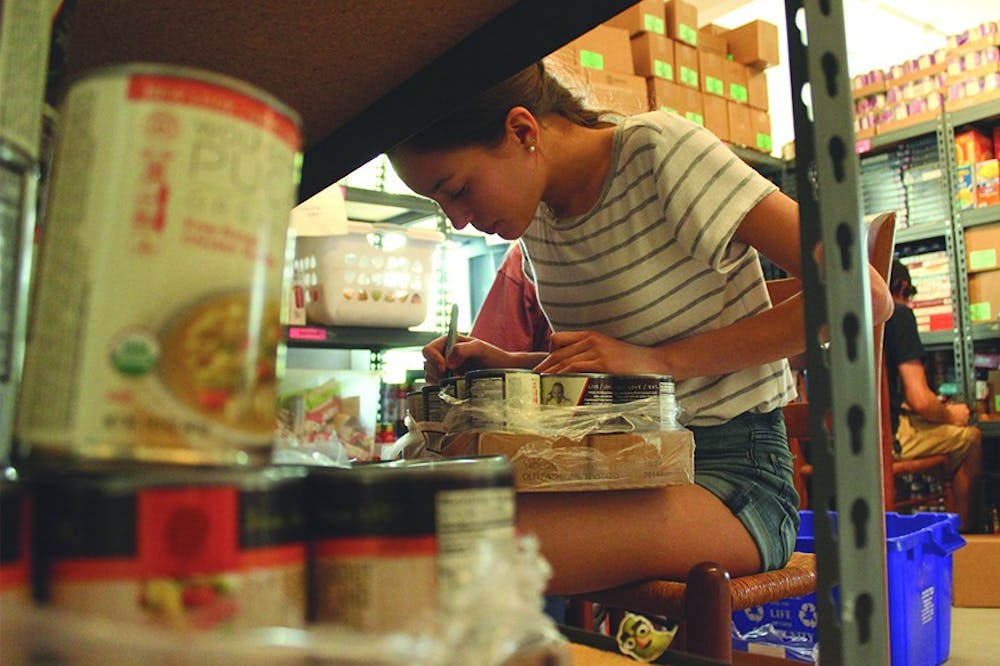And Chapel Hill-Carrboro students aren’t the only ones who are likely to be waiting, according to the N.C. Department of Public Instruction.
A total of 47 percent of students in the state are eligible for free and reduced lunch, a fact that’s unsettling for Aaron Nelson, president of the Chapel Hill-Carrboro Chamber of Commerce.
“In one of the richest counties in the state of North Carolina, we need to make sure that everybody has enough to eat,” Nelson said. “It’s completely within our power; no child should go to bed hungry.”
Robert Rector, a senior research fellow in the Institute for Family, Community and Opportunity at The Heritage Foundation, emphasized that food security, as an issue, does not exist in isolation.
“Treating food security as a stand-alone nutrition issue, independent of the behaviors that cause it, will lead to unwise public policy,” Rector said in a statement. “Regrettably, most discussions of hunger simply ignore the behaviors that strongly contribute to the problem.”
He identified consumption habits, smoking and the choice of expensive fast food as additional factors.
Maureen Berner, a professor in the UNC School of Government, said her research indicates nonprofits cannot be alone in the fight against child hunger.
“The example I would give is the common situation of a local food pantry running out of food before the line runs out,” she said. “That’s not to say that the nonprofits are not trying and that they’re not doing one hell of a job. But the problem is only growing.”
Competing narratives
To get the day's news and headlines in your inbox each morning, sign up for our email newsletters.
Counter to public perceptions of overall growth since the 2008 recession, Berner said economic recovery has not benefited the state equally.
“The good news has been that there has been economic growth,” she said. “The disturbing news is that growth is being much more highly concentrated in a smaller portion of the population.”
After she published a report in March on poverty, Berner addressed the competing narratives between an economically healthy North Carolina and one still struggling with child poverty and food insecurity.
Berner said reports can be deceptive depending on what they are measuring.
Still, economic struggles in the state were around long before the recession, she said.
“I would argue based on my research around food and security that we have had a deteriorating economic condition in North Carolina since the mid-1990s,” she said. “So our current data that reflects real hardships in parts of our state started way before the recession.”
Tazra Mitchell, a policy analyst for the N.C. Budget and Tax Center at N.C. Justice Center, said the so-called “Carolina comeback” N.C. Gov. Pat McCrory has noted is not necessarily accurate.
“You have this second narrative which is what we think is actually happening is the ‘Carolina setback,’” she said.
Child poverty and its affiliated issues have existed through good and bad economic times, Mitchell said.
“It’s not really all that surprising that there isn’t a very deep level of understanding of the extent of poverty,” she said. “And part of that is that people don’t see it.”
Tyler Weidig, the summer food service supervisor for the Food Bank of Central and Eastern North Carolina, said from what he’s seen, rural areas have been slow to recover — and the food bank is making efforts to expand its impact with more than 150 sites this summer.
Though the organization serves 34 counties in North Carolina and offers a USDA-supported summer food program, a significant portion of eligible children are not being reached. The state left millions of dollars on the table from the USDA, Weidig said.
“People are not very aware of the program, and I think that’s changing pretty rapidly.”
Tiffany Turner, a UNC sophomore and intern with TABLE, said the organization is working to bring awareness to not only Chapel Hill and Carrboro but also the college population.
“UNC has a huge community there, and I think college students don’t realize what lives lay outside of it,” she said.
state@dailytarheel.com



